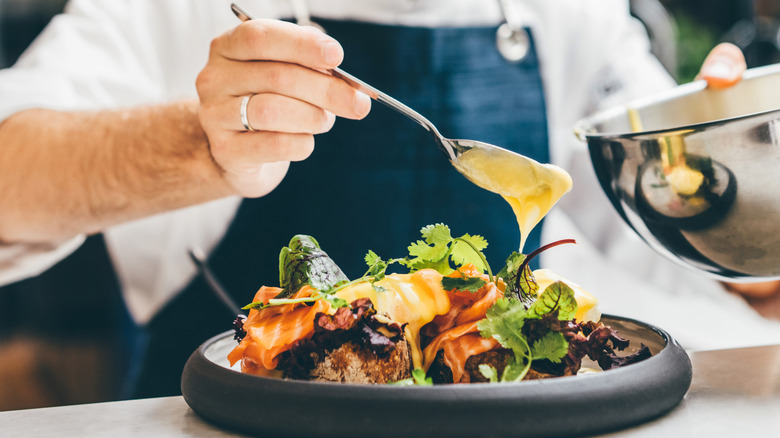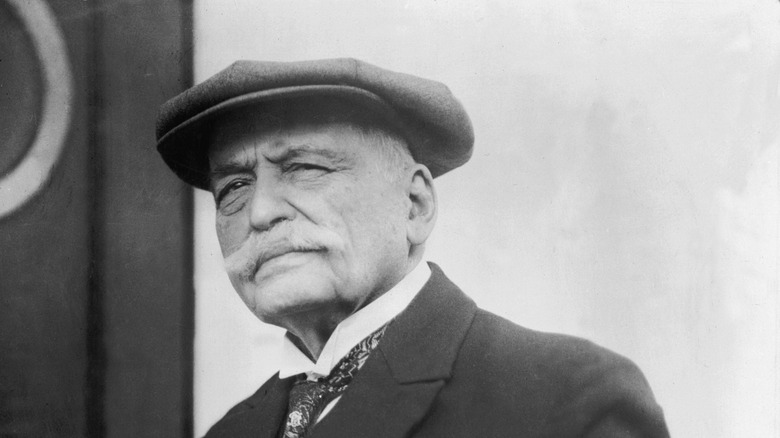The French Culinary Icon Who First Classified The 5 Mother Sauces
French cuisine may sound like it consists mainly of dishes you'd have to go to an upscale restaurant to sample, but the reality is quite the opposite. From the simple cold classic soup that was Julia Child's favorite to crusty jambon-beurre sandwiches that are a Paris staple, French flavor combinations and cooking techniques can be found in many places. Nowhere is this more apparent than the five mother sauces, versions of which underpin many dishes in multiple cuisines. You've probably heard of popular ones like béchamel, hollandaise, and ubiquitous tomato sauce. The other two mother sauces are velouté and espagnole. These five preparations are used in everything from pasta and cream sauces to soups, gravies, and much more. Sauces that are derivatives of the mother sauces — made by slightly modifying or adding certain ingredients to mother sauces — are fittingly called daughter sauces.
The four original mother sauces, along with several daughter sauces, were initially described by chef Marie-Antoine Carême in the 19th century. However, it was the acclaimed Georges Auguste Escoffier who updated this group to include tomato sauce in the late 19th century. As a former army chef, Escoffier saw the value of organization and discipline and brought it to all the subsequent kitchens he managed which include the Savoy Hotel and the Ritz in Paris. In addition to the five mother sauces, he also codified a restaurant hierarchy that is used to this day and includes specific posts like a restaurant kitchen's CDC, the patissier, and even the poissonnier (who handles seafood).
Escoffier's 5 mother sauces form the base for dozens of dishes
The five mother sauces enshrined by Escoffier showcase several essential cooking techniques like infusing, emulsifying, whisking, and thickening. The sauces are also a great way to understand how basic flavoring ingredients interact, and how they can be modified. At the heart of all but the hollandaise sauce is a roux — a mixture of flour and fat used as a thickening agent. Of course, modern chefs sometimes use other methods, like Jacques Pépin's simple pantry ingredient for thickening soup.
The simplest mother sauce is béchamel, made by adding warm milk to a roux. This sauce forms the base for most cream and cheese sauces, and can also be modified by infusing the milk with aromatics and herbs. The mother sauce version of tomato sauce also uses roux as a thickening agent or by merely simmering and reducing it.
Velouté and espagnole sauces both use stock as the base, which is then thickened using a roux. The former is made with a clear stock, resulting in a light, mildly-flavored sauce that's easily modified. Espagnole is a brown sauce that uses dark stock made from roasted bones and therefore has a much deeper flavor. It also contains tomatoes, which bolster the rich, umami notes, making this the most robust of the mother sauces. Finally, the classic hollandaise is made by whisking clarified butter and egg yolks together to create a thick emulsion. While it contains the fewest ingredients, hollandaise is perhaps the hardest to perfect of the mother sauces.

